Guided missile is a flying weapon that is steered to its target. Some guided missiles steer themselves. They contain a computer and other special equipment that guides them. Some of these guided missiles can even chase and destroy a moving target, such as an airplane or another missile. Others fly under human control, though they carry no pilot. They follow directions sent to them from controllers who may be far away.
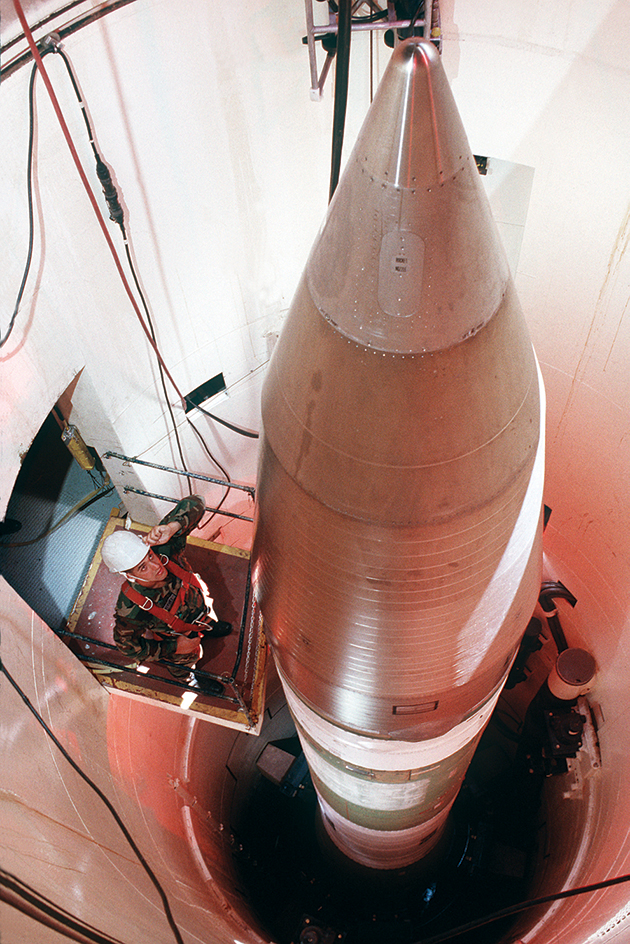
Most guided missiles are long and slender. Their shape minimizes air resistance, called drag, during flight. On most guided missiles, wings, tail surfaces, or both stick out from the body to enable the missile to be steered during flight. Some missiles use a steering method called thrust vectoring. In this method, the engine’s exhaust is deflected—that is, its direction of flow is changed—to steer the missile.
Most missiles are powered by either a rocket engine or a jet engine. But some guided missiles are winged bombs that have no engine. These missiles glide to their target after being dropped from an airplane.
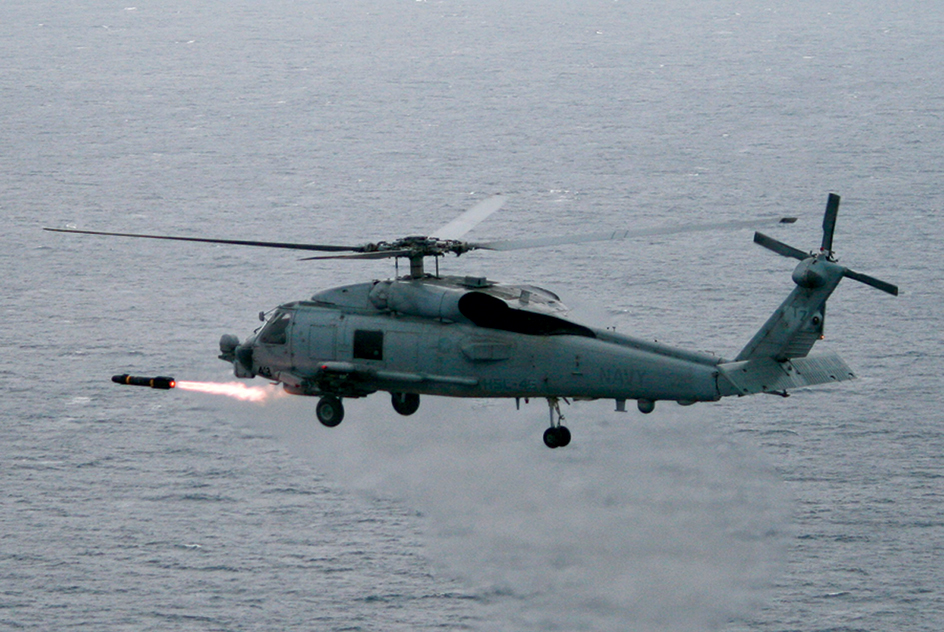
Missiles generally are designed to deliver an explosive payload called a warhead that explodes to destroy a target. But some antimissile missiles do not use a warhead. Instead, they are designed to destroy a target missile by hitting it in the air.
Guided missiles are made in a wide range of sizes. A small rocket about 4 feet (1.2 meters) long can be launched on the battlefield at a tank or an airplane. A giant missile about 60 feet (18 meters) tall can reach one-third of the way around the world. Such a missile, with a nuclear warhead, can destroy an entire city. A small, but increasing, number of nations possess nuclear missiles. However, no nation has ever launched a guided nuclear missile against an enemy.
Parts of a guided missile
The warhead
may contain a high explosive, such as TNT, or a nuclear device. High-explosive warheads work in various ways. Some damage a target mainly by creating a tremendous blast of air pressure. Others explode and shoot out pieces of metal in all directions. The flying fragments strike and damage targets. Some warheads are designed to penetrate deep inside a reinforced building or underground bunker and then explode.
A nuclear warhead may contain an explosive nuclear device. Some nuclear missiles contain several warheads. Such missiles can be launched against a group of targets. When a missile approaches the top of its trajectory (path of flight), the warheads separate, and each flies toward its own target. Such warheads are called Multiple Independently Targetable Reentry Vehicles (MIRV’s). Nuclear-armed missiles that target an enemy’s homeland from great distances are often referred to as strategic missiles. Because such a nuclear warhead can destroy an entire city, the threat it poses can dramatically affect the strategies and outcomes of conflicts. Less powerful tactical missiles, on the other hand, are designed for short- or medium-range use against individual targets in a battle zone. 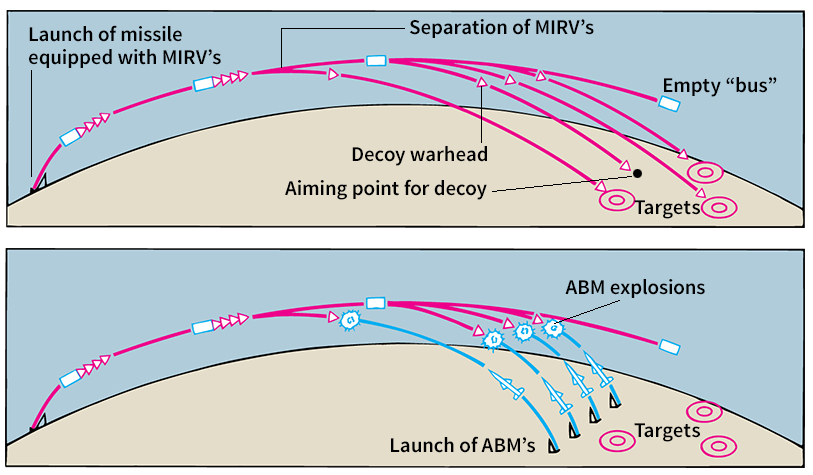
Every missile has a fuzing system that causes the warhead to explode at the proper time. This system first puts the warhead in a “ready” condition so that it will explode when triggered. The fuzing system triggers the main explosion by setting off a small charge. An impact fuze triggers when the missile collides with a target. A proximity fuze triggers when the missile flies close to its target. A warhead designed to explode at a specific height can use radar to gauge its position relative to the ground. Other missiles, called hit-to-kill missiles, are antimissile missiles designed to destroy an enemy aircraft or missile by direct impact.
The engine.
Rocket engines power many guided missiles. Such an engine generates forward force called thrust by expelling gases at high pressure. The engine produces the pressurized gases by burning chemicals in an enclosed area called a combustion chamber. An opening called a nozzle at the end of the chamber allows the gases to escape. The force of the escaping gas pushes the rocket in the opposite direction.
The chemicals burned in a rocket engine are called propellants. Most guided missiles use solid propellants shaped in the form of a hollow rod called a grain. Some missile engines use liquid propellants, which are carried in special tanks inside the body of the missile.
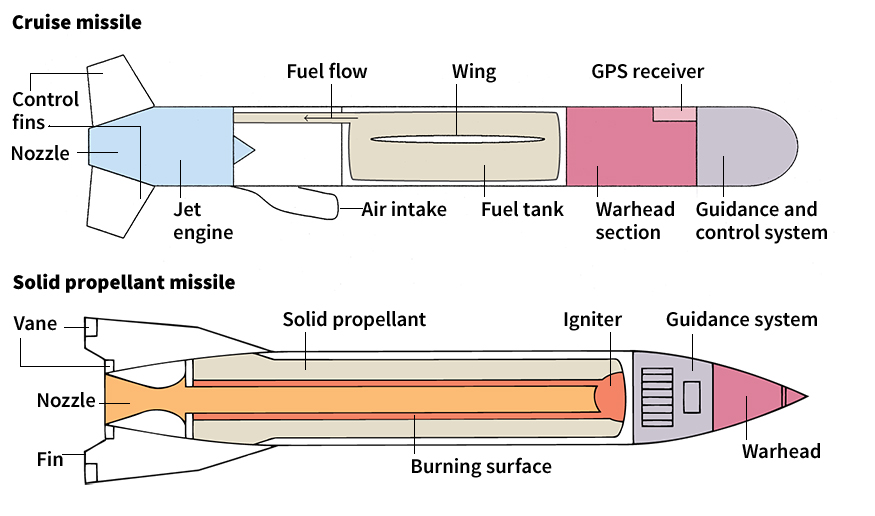
Rocket propellants include a fuel and an oxidizer. The fuel provides the basic burning substance. The oxidizer supplies the oxygen needed to make the fuel burn. In solid-propellant rockets, the fuel and oxidizer are both in solid form and are combined in the grain. Once the grain has been set on fire, the two propellants continue to burn. In missiles that use liquid propellants, the propellants must be pumped into the combustion chamber, where they mix and burn. Unlike a jet engine, which draws in outside air, a rocket engine carries everything it needs within it. As a result, rocket-powered missiles can operate in outer space, where there is no air, as well as in the atmosphere. See Rocket .
A jet engine powers some guided missiles. Like a rocket, a jet engine uses fuel. However, a jet engine gets its oxygen from the atmosphere, taking in air as it flies. Because a missile powered by a jet engine does not have to carry oxidizer, it can carry more fuel than a rocket-powered missile. Thus, a jet-powered missile can generally fly farther than a rocket-powered missile of similar size. But jet engines tend to be of more complex design than rockets. And because a jet engine requires oxygen from the atmosphere, jet-powered missiles cannot operate in space. See Jet propulsion .
Guidance and control systems
work together to keep a missile on course. The guidance system may include a computer and other special instruments. These instruments determine the missile’s course and send electronic steering “instructions” to the control system. The control system includes movable devices that control flight, such as fins, vanes, and wings. These devices use instructions from the guidance system to turn the missile in the desired direction. For more details on guidance systems, see the section of this article on “Kinds of guidance systems.”
Launching equipment
for guided missiles depends on the type of launch vehicle. Aircraft carry missiles on their wings or in internal bomb bays. Ships use vertical launch systems (arrays of launchers set into the ship’s deck), boxes (deck-mounted launch modules protected by armor), or missile canisters to launch missiles. Submarines use tubes. Ground-launched missiles can be launched from a mobile, trucklike vehicle or from a fixed vertical shaft called a silo built underground. Some missiles are small enough to fit in a shoulder-fired launch tube.
Kinds of guided missiles
Guided missiles can be classified in various ways, depending on such characteristics as how they fly and what targets they attack. For example, one important group of missiles, called ballistic missiles, follow an arcing path like that followed by a ball thrown through the air. All other missiles can be described as nonballistic. Guided missiles also may be grouped into four other types, depending on where their flight begins and ends. These types are: (1) surface-to-surface, (2) surface-to-air, (3) air-to-air, and (4) air-to-surface.
Ballistic missiles.
The flight of a ballistic missile has two parts. During the first part, the missile’s rocket engine blasts the missile onto its planned course and gives it the desired speed. After a short time, the engine shuts off. The missile then coasts through the second part of the flight until it drops down on its target. A ballistic missile is guided only during the first part of its flight.
Ballistic missiles can travel great distances. But they must carry large amounts of propellants to reach the proper speed and altitude for a long flight. Nearly 90 percent of the weight of a ballistic missile may be propellants. As a result, ballistic missiles are the largest of all missiles.
Nonballistic missiles.
Most guided missiles are nonballistic. Some fly their entire course under power from their engine and under the control of their guidance system. They are usually fired at airplanes, ships, or ground targets. Jet-powered cruise missiles can fly at altitudes low enough to escape radar detection. They can be launched from the ground, from large aircraft, and from submarines.
Surface-to-surface missiles
(SSM’s) are launched from the ground or the sea against surface targets. An intercontinental ballistic missile (ICBM) is designed to strike a target more than 3,400 miles (5,500 kilometers) away after soaring as high as 700 miles (1,100 kilometers). An intermediate-range ballistic missile (IRBM) flies up to 3,400 miles. A medium-range ballistic missile (MRBM) can reach up to 1,700 miles (2,700 kilometers). A short-range ballistic missile (SRBM) may reach up to 700 miles. A ballistic missile launched from a submarine is referred to as a submarine-launched ballistic missile (SLBM). A ship- or ground-launched cruise missile is a nonballistic SSM. A cruise missile can have a range of several thousand miles. 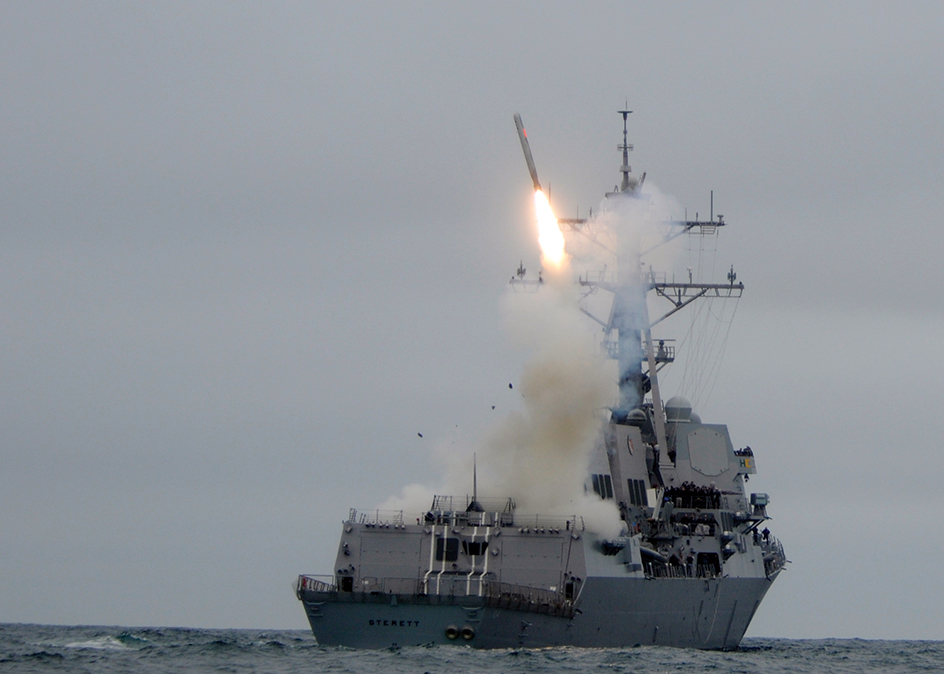
Surface-to-air missiles
(SAM’s) are fired from the ground or from ships at airplanes, helicopters, or missiles. The Stinger, developed by the U.S. Army, and the Javelin, used by the British Royal Army, are surface-to-air missiles small enough for one soldier to carry and launch. The U.S. Army’s Patriot missile, on the other hand, weighs about 2,000 pounds (910 kilograms) and requires a large launcher.
A surface-to-air missile designed to shoot down approaching ballistic or cruise missiles is called an antimissile missile. A special type called an antiballistic missile (ABM) is designed specifically to defend against ballistic missiles. ABM’s may be used as a limited defense of a large area against attacks by small numbers of nuclear weapons, called national missile defense. They may also be used in theater missile defense,—that is, defense against short-range missiles used in a limited area of military operations. The Patriot missile is an ABM used in theater missile defense.
Air-to-air missiles
(AAM’s) are launched from fighter airplanes or helicopters against enemy aircraft. Most of them are relatively small, short-range weapons. For example, the Sidewinder missile—used by the U.S. Air Force, Navy, and Marine Corps and the United Kingdom’s Royal Air Force (RAF)—has a range of about 12 miles (19 kilometers). One version of the Sidewinder, the AIM-9X, is so maneuverable that it can even engage enemy aircraft behind the launch aircraft. The Advanced Medium Range Air-to-Air Missile (AMRAAM), used by the RAF, the U.S. Air Force, and the U.S. Navy, can reach a target 30 miles (48 kilometers) away. The RAF’s Skyflash missile also has a range of about 30 miles. Other nations, notably Russia and Israel, have developed effective short- and medium-range air-to-air missiles.
Air-to-surface missiles
(ASM’s) are launched from aircraft at targets on the ground or at ships. Such missiles include the RAF’s long-range Brimstone missile, powered by a rocket engine; the unpowered Joint Standoff Weapon (JSOW); and the long-range Joint Air-to-Surface Standoff Missile (JASSM), powered by a turbojet engine. The U.S. Air Force and Navy use the JSOW and JASSM, which utilize satellite navigation. JASSM can hit a target with pinpoint accuracy after flying over 200 miles (320 kilometers).
Other air-to-surface missiles are designed to destroy enemy air-defense radar systems. They include the High-speed Anti-Radiation Missile (HARM) used by the U.S. Air Force and Navy and the Air-Launched AntiRadar Missile (ALARM) used by the RAF until 2013. These missiles find an enemy radar beam and follow it to the transmitter. However, such a missile can miss its target if the radar is turned off. Strategic nuclear ASM’s include the U.S. Air Force’s jet-powered Advanced Cruise Missile and the French Air Force’s ASMP (Air-Sol Moyenne Portée), powered by a simple type of high-speed jet engine called a ramjet.
Kinds of guidance systems
More than one kind of guidance system may steer a missile to its target. For example, one kind may control a missile during the early part of its flight, and another may take over for the final attack. Some missiles are launched without a preset target. Such lock-on after launch (LOAL) missiles gather target information mid-flight. The four main kinds of missile guidance systems are: (1) preset, (2) command, (3) beam-riding, and (4) homing.
Preset guidance
makes a missile follow a course that is mapped out before launch. Many missiles have an inertial measurement unit (IMU), a device that measures the missile’s motion to determine its location and speed at any time during its flight. Several guidance systems use information from the Global Positioning System (GPS), a satellite-based navigation system, to correct for drift.

The preset guidance system of the U.S. Navy’s Tomahawk cruise missile is so accurate that the missile will routinely hit within 50 feet (15 meters) of its target after flying hundreds of miles or kilometers. The missile navigates to its target using one of two methods. In one method, a terrain contour mapping (TERCOM) system takes pictures of the terrain at regular intervals during its journey and compares them with images stored in an on-board computer. The missile can then correct its course at a specific point or landmark. In the other method, GPS navigation guides the missile from one point to another. Once in the target area, the missile can switch to a terminal guidance system for the final attack. This system takes a picture of the target and makes final adjustments by comparing that picture with an image stored in its on-board computer. Some Tomahawk missiles store many targets and routes on their computers. During flight, controllers can redirect the missiles to any one of the preplanned targets, or even to a target that was not previously stored.
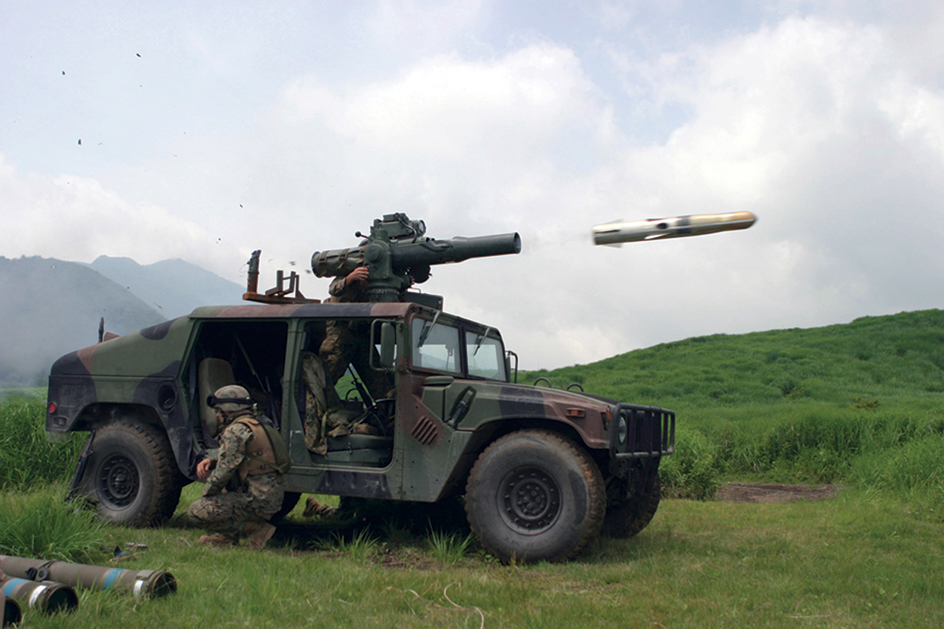
Command guidance
enables the missile launching crew to steer the missile. There are several ways to send command (steering) signals to the missile. Some short range missiles use wire-command systems. Electronic signals travel to such a missile over long wires that remain attached to the missile in flight. The U.S. Army’s Tube-launched, Optically-tracked, Wire command-link guided (TOW) antitank missile uses a wire-command system. Other systems transmit commands by radio waves or by a laser beam. The Patriot ABM has a radar-controlled guidance system.
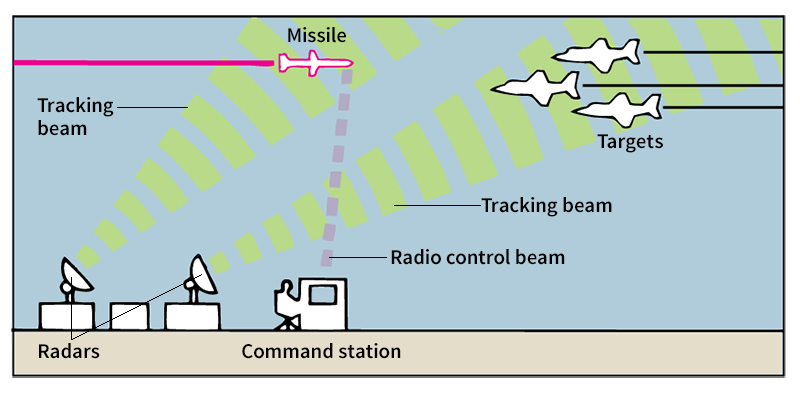
Beam-riding guidance
leads a missile to its target by means of radar or a laser beam. The main use of this kind of system is to destroy airplanes. First, an aiming station in the launching area directs a narrow radar beam at the enemy aircraft. Then, the missile is launched. The missile, controlled by a computer inside it, “rides” the beam to the target.
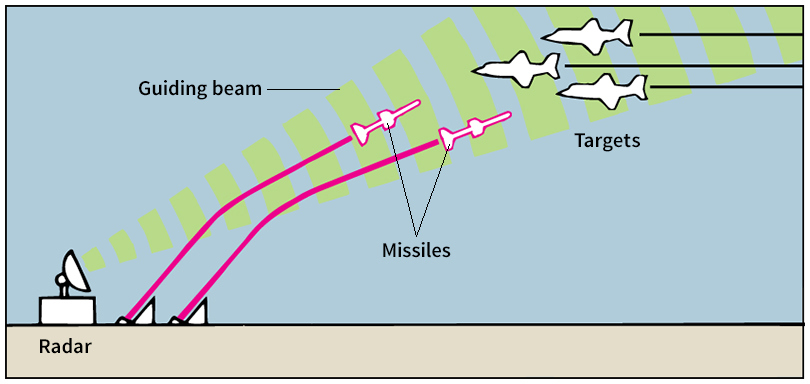
Homing guidance
enables a missile to hit a target by following energy emitted by, or reflected from, a target. Stinger and Sidewinder missiles, for example, use guidance systems that home in on heat. They lock in on a “hot spot” created by the target aircraft’s jet engines.

Other homing guidance systems “paint” a target with a radar or laser beam and then home in on the beam’s reflection. The beam may come from the missile itself or from a separate device on the ground or in an aircraft. Hellfire missiles, used by the U.S. armed forces, home in on reflected beams to attack a variety of ground targets.
History
Early development.
The Chinese used unguided rockets as fireworks perhaps as early as the 1200’s. By the 1300’s, such rockets were used widely in Asia and Europe. During the early 1800’s, William Congreve, a British Army officer, developed unguided, rocket-powered missiles that could carry explosives. These missiles were used widely in wars fought in Asia, Europe, and North and South America. The military use of rocket missiles dropped off during the late 1800’s. By that time, artillery weapons had become more accurate and effective than rocket missiles. During World War I (1914-1918), France made limited use of unguided rockets to shoot down war balloons.
The first guided missiles.
During World War II (1939-1945), Germany developed the first guided missiles used in combat. By the early 1940’s, Germany had produced two terrifying weapons, first the V-1 and then the V-2. These missiles caused great destruction and loss of life in European cities. The V-1 was about 25 feet (7.6 meters) long and carried about a ton of explosives. It had preset guidance and flew about 360 miles (580 kilometers) per hour, powered by a jet engine. The V-2, which was twice as long as the V-1, flew under rocket power. Like the V-1, the V-2 had preset guidance. But the V-2 traveled more than 3,300 miles (5,300 kilometers) per hour—faster than the speed of sound. People in target cities could not hear the V-2 coming.
Postwar developments.
After World War II, many German V-2 engineers went to work for the United States to help develop guided missiles, and the United States made major strides. The Navy made major technological breakthroughs under Project Bumblebee, which began in the early 1940’s. The result was a family of ship-launched missiles—the Tartar, Terrier, and Talos—to defend ships against attacking aircraft. These missiles formed the backbone of Navy defense until they were replaced by the Standard family of missiles in the 1970’s. The Navy developed the Sidewinder, the first U.S. air-to-air missile, during the 1950’s. Over several decades, the United States improved the Sidewinder and developed the Sparrow, a longer-range air-to-air missile. The United States and many other nations have since aggressively developed tactical missiles.
Also after World War II, the United States and the Soviet Union began a missile development race as part of the Cold War, a period of intense rivalry between the Communist and non-Communist nations. Each nation tried to produce more effective strategic ballistic missiles than the other for delivery of nuclear warheads. In the late 1950’s, each nation test-launched its first ICBM’s and worked to create submarine-launched missiles. During the 1960’s, the two nations developed antiballistic missiles. By the late 1960’s, the total number of missiles and nuclear warheads had grown alarmingly large. Each nation, if attacked, could inflict a devastating nuclear counterattack—a situation known as mutually assured destruction (MAD).
Beginning in the 1970’s, tensions cooled between the United States and the Soviet Union. The two nations reached a number of agreements that placed limits on their nuclear missiles. But nonnuclear missiles played an increasingly important role in global conflicts. During the late 1970’s and 1980’s, for example, Afghan fighters used U.S.-supplied Stinger missiles to shoot down Soviet helicopters and other aircraft. The missiles helped the Afghans fend off the far more powerful Soviet military.
In other conflicts, guided missiles enabled a more powerful military to easily strike and cripple enemy forces. The United States and its allies used several kinds of guided missiles against the Iraqi military during the Persian Gulf War of 1991 and during the early phase of the Iraq War (2003-2011). In 2011, the United States and other members of the North Atlantic Treaty Organization (NATO) launched hundreds of guided missiles at Libyan military forces that were attacking civilians.
Guided missiles can also attack other targets, such as terrorists and insurgents, that are difficult for military or police forces to reach. During the 2000’s, for example, the United States used remote-controlled unmanned aerial vehicles, also called drones, to launch Hellfire missiles at suspected Taliban and al-Qa`ida militants in Afghanistan and Pakistan.
In the late 2010’s, the first hypersonic missiles were developed. Hypersonic missiles are missiles that travel faster than five times the speed of sound. Sound normally travels at about 660 miles (1,060 kilometers) per hour. In addition to having great speed, hypersonic missiles are designed to be maneuverable during flight. Their maneuverability makes the missiles hard to track and evade (avoid). Hypersonic missiles can either be carried by a ballistic missile, or they can be launched independently like cruise missiles.
